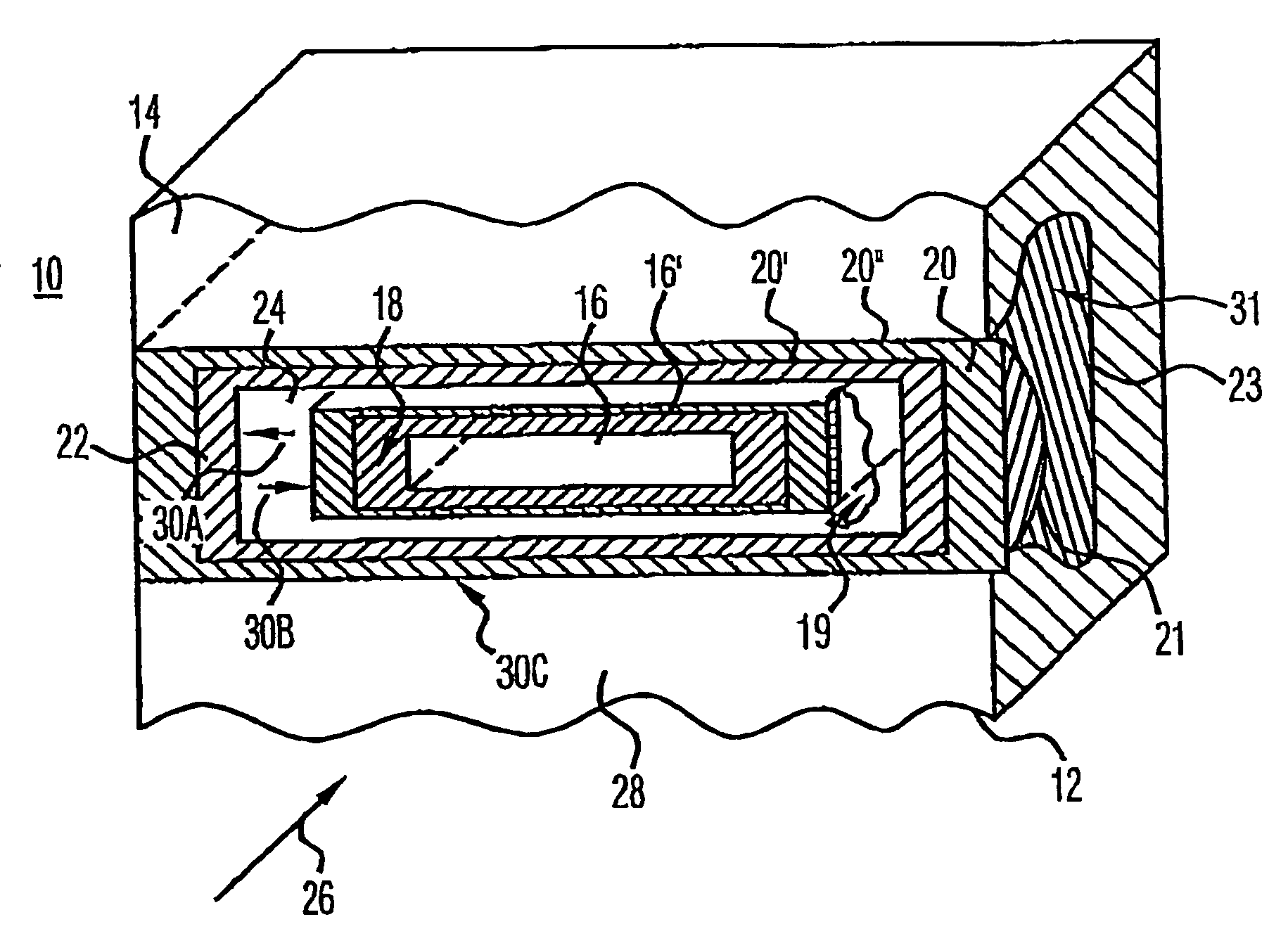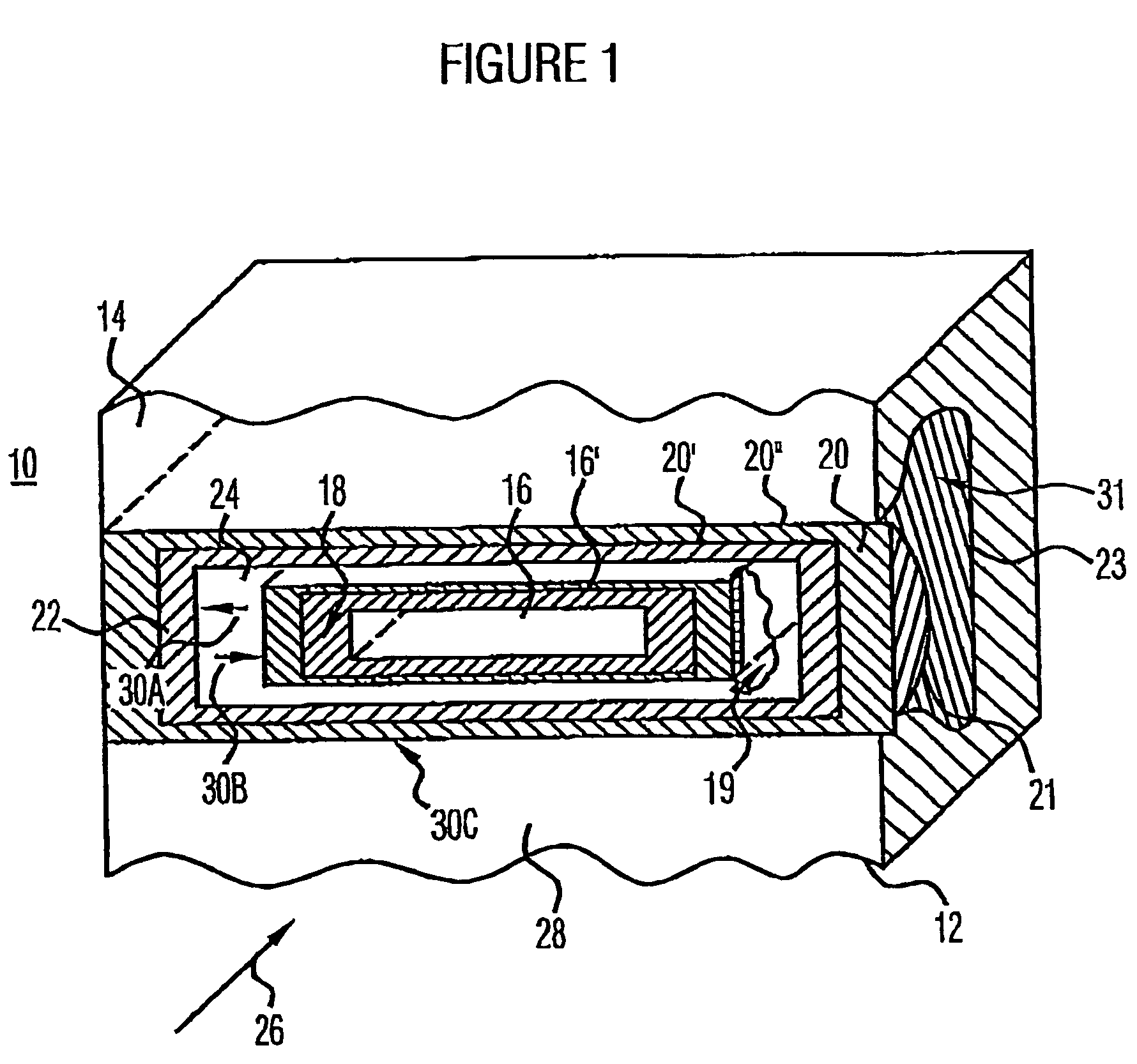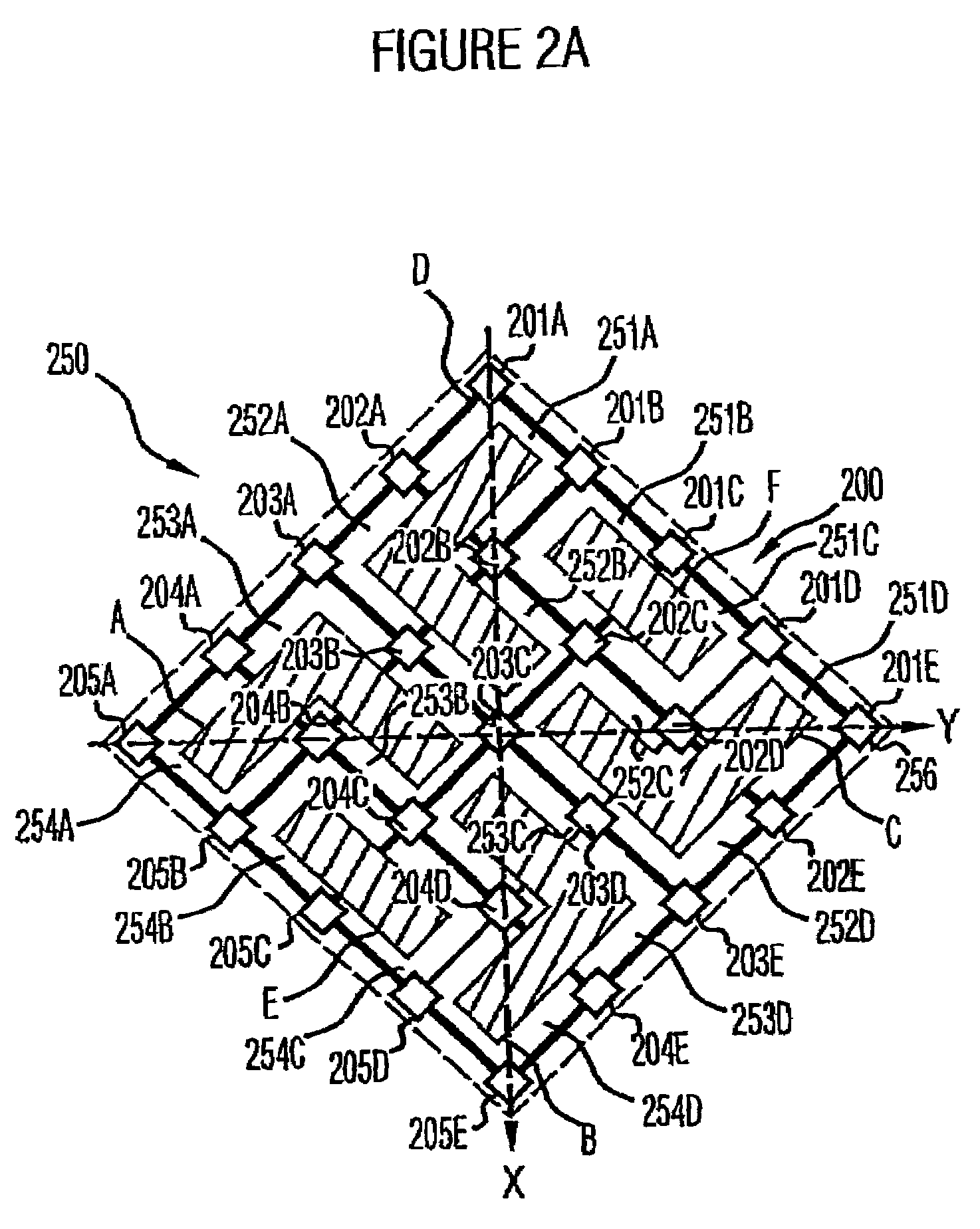Photodiode
a photodiode and photodiode technology, applied in the field of photodiodes, can solve the problems of reducing affecting the detection accuracy of readouts, and affecting the accuracy of readouts, so as to reduce the bandwidth of photodiodes, reduce the cost of detecting diffusion currents, blur the response of photodiodes
- Summary
- Abstract
- Description
- Claims
- Application Information
AI Technical Summary
Benefits of technology
Problems solved by technology
Method used
Image
Examples
Embodiment Construction
[0032]FIG. 1 shows an embodiment of a photodiode generally indicated by 10. The photodiode includes a substrate of a first conductivity type, such as, for example, p-doped, which is generally indicated by 12 and comprises a main surface 14 which in FIG. 1, which is designed as a partial sectional spatial illustration, can be seen head-on. In the semiconductor substrate 12, a signal region 16 of a second conductivity type opposite to the first one is formed, such as, for example, n-doped, wherein the perimeter thereof is indicated in FIG. 1 by 16′. The signal region 16 abuts on the main surface 14 and extends to a certain depth into the substrate. A space-charge zone region 18 which in FIG. 1 is illustrated in a hatched manner and extends along the perimeter 16′ of the signal region 16 both into the signal region 16 and from there into the semiconductor substrate 12 is formed by the signal region 16 of the second conductivity type in the semiconductor substrate 12 of the first conduc...
PUM
 Login to View More
Login to View More Abstract
Description
Claims
Application Information
 Login to View More
Login to View More - R&D
- Intellectual Property
- Life Sciences
- Materials
- Tech Scout
- Unparalleled Data Quality
- Higher Quality Content
- 60% Fewer Hallucinations
Browse by: Latest US Patents, China's latest patents, Technical Efficacy Thesaurus, Application Domain, Technology Topic, Popular Technical Reports.
© 2025 PatSnap. All rights reserved.Legal|Privacy policy|Modern Slavery Act Transparency Statement|Sitemap|About US| Contact US: help@patsnap.com



